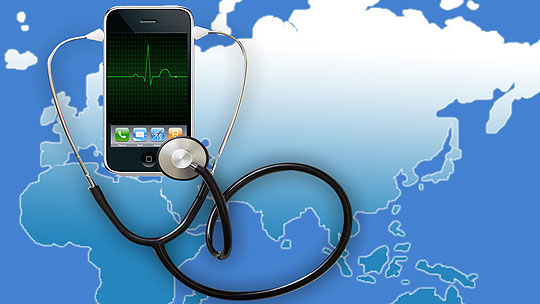3 min read • Technology & innovation management
mHealth could be the next killer app in the mobile industry, states Arthur D. Little
Advances in mobile technology have the potential to transform the way health care is delivered in both emerging and developed markets, with revenue potential reaching ten billion dollars within five years. While expanding into mHealth can create significant value and new growth opportunities for mobile operators, there are also significant challenges to be faced, as addressed in Arthur D. Little’s latest viewpoint, “Capturing Value in the mHealth Oasis: An Opportunity for Mobile Network Operators?".
“mHealth is unlike any other mobile service and requires a completely new marketing strategy," says Karim Taga, Director at Arthur D. Little’s Telecoms, Information, Media & Electronics (TIME) Practice. The mobile operator (MNO) must maximize its own capabilities, and partner with other players to acquire key capabilities to effectively and efficiently bring patients into the ecosystem.
There is no one-size-fits-all mHealth solution for all markets. The demand for, and the nature of, mHealth services depend on the degree of development and specific characteristics of individual markets. In emerging markets, mHealth solutions, such as the delivery of medical information by SMS or MMS, medicine reminders, remote data collection, and medical help-lines, can help improve patients’ access to basic medical care. In these markets, the MNO must take a leading role in developing the ecosystem, and most crucially, must also engage the support of non-governmental organizations and government agencies with local expertise.
In developed markets with rapidly increasing smartphone penetration, health industry players are entering the mHealth market as a way to drastically reduce costs while focusing on prevention. “In these markets, remote monitoring will be a key revenue driver,” states Mr. Taga. “These services are typically offered at a premium, enabling mobile operators to add significant ARPU.”
While few commercial offers currently exist, mHealth is firmly on the agenda for many MNOs. If MNOs adhere to a few simple guidelines as outlined in this Viewpoint, they can avoid the major obstacles and increase their chances of success. If these guidelines are taken into account, Arthur D. Little believes that mHealth will surpass even the most optimistic industry predictions within the next five years and add significant value to the mobile industry.
To access the full report, please visit:
www.adl.com/mHealth
3 min read • Technology & innovation management
mHealth could be the next killer app in the mobile industry, states Arthur D. Little
Advances in mobile technology have the potential to transform the way health care is delivered in both emerging and developed markets, with revenue potential reaching ten billion dollars within five years. While expanding into mHealth can create significant value and new growth opportunities for mobile operators, there are also significant challenges to be faced, as addressed in Arthur D. Little’s latest viewpoint, “Capturing Value in the mHealth Oasis: An Opportunity for Mobile Network Operators?".
“mHealth is unlike any other mobile service and requires a completely new marketing strategy," says Karim Taga, Director at Arthur D. Little’s Telecoms, Information, Media & Electronics (TIME) Practice. The mobile operator (MNO) must maximize its own capabilities, and partner with other players to acquire key capabilities to effectively and efficiently bring patients into the ecosystem.
There is no one-size-fits-all mHealth solution for all markets. The demand for, and the nature of, mHealth services depend on the degree of development and specific characteristics of individual markets. In emerging markets, mHealth solutions, such as the delivery of medical information by SMS or MMS, medicine reminders, remote data collection, and medical help-lines, can help improve patients’ access to basic medical care. In these markets, the MNO must take a leading role in developing the ecosystem, and most crucially, must also engage the support of non-governmental organizations and government agencies with local expertise.
In developed markets with rapidly increasing smartphone penetration, health industry players are entering the mHealth market as a way to drastically reduce costs while focusing on prevention. “In these markets, remote monitoring will be a key revenue driver,” states Mr. Taga. “These services are typically offered at a premium, enabling mobile operators to add significant ARPU.”
While few commercial offers currently exist, mHealth is firmly on the agenda for many MNOs. If MNOs adhere to a few simple guidelines as outlined in this Viewpoint, they can avoid the major obstacles and increase their chances of success. If these guidelines are taken into account, Arthur D. Little believes that mHealth will surpass even the most optimistic industry predictions within the next five years and add significant value to the mobile industry.
To access the full report, please visit:
www.adl.com/mHealth


